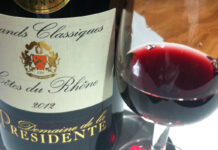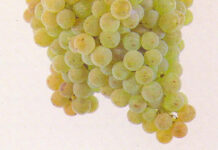Luke Richardson is a sommelier who has worked in a range of venues across the UK in a career spanning more than 20 years. In his column for SLTN he shares his thoughts on all things wine-related and answers your questions about wine. If you have a question for Luke email it to sltn@peeblesmedia.com

Hi all, and a very Happy New Year to everyone!
Saying that, January is a time of the year where we all tend to hunker down a bit and enjoy stews and pies and the like, hopefully along with a nice hearty glass of wine.
This time around I thought I would talk about a much overlooked grape that conveniently fits the bill: Mourvedre.
Known as Monastrell or Mataro amongst a plethora of other names, this thick skinned grape prefers warmer climates and it’s best known for wines from the Rhone Valley and Provence in France and the Mediterranean coast of Spain, from where the variety originated.
Whilst it is often used in blends (most famously in Grenache/Syrah/Mourvedre blends, or GSM’s) this time around I’m just going to talk about varietal wines.
Often pushing upwards of 14% ABV, they also offer a big, robust flavour profile with aromas reminiscent of brambles and earthy undergrowth.
Sometimes, when the wines are very young, they can show a little too many ‘farmyard’ aromas, so always look for a couple of years in bottle if possible.
From Yecla or Jumilla in Valencia in Spain you can find nice examples from around £7.50 + VAT, with a nice touch of herbal nature to the finish of the more refined examples. Whilst you’ll be paying closer to double that figure for a varietal wine from Bandol, the wines are darker in flavour and softer in body.
The main reason for that is that the wines from Spain are generally made for drinking earlier and are made more on their fruit than the French examples.
Don’t get me wrong, red Bandol is delicious but often needs at least five years in bottle to soften off the quite considerable tannins that it is known for, and besides, at £15-plus for a decent example it’s not exactly going to fly off the shelves once you’ve applied your mark-up, but the Spanish examples are much more approachable all around, stylistically and in price!
There are a few examples of South African and Australian varietal wines and these can be delicious too – although not so long ago they were much better value. Today I find the cheaper Spanish examples better value for quality and once again these wines go to show that sometimes simple is best!
There are some very nice examples from the USA as well, especially west coast, but they cost an arm and a leg. I would still recommend a minimum of a couple of years in bottle wherever they are from, ideally three. Great to pair with a stew or a casserole special to keep the long winter nights at bay!
Until next time, happy Mataroing!























